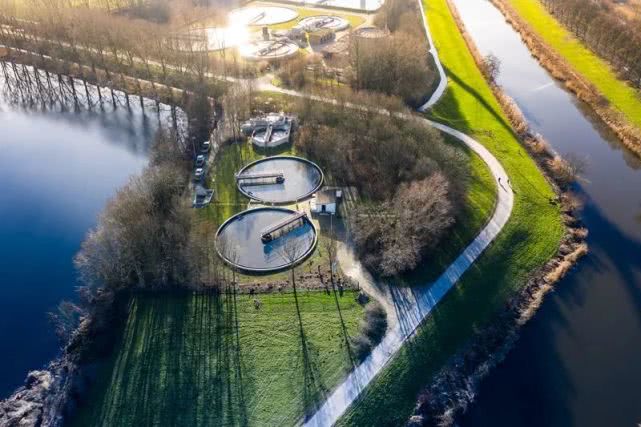(单词翻译:单击)
听力文本
Scientists Say Virus in Wastewater Could Help Track Infections
Scientists say that measuring coronavirus levels in wastewater could help them estimate the number of infections in communities.
The method could be used around the world to identify where the virus is spreading and reduce the need for mass testing.
Small studies carried out in Europe and Australia suggest that signs of the coronavirus can be found in sewage — waste material carried away from homes and other buildings in a system of pipes. Those findings have led some scientists to consider wide wastewater testing to estimate the number of infected people in a given area.
Davey Jones is a professor of environmental science at Britain's Bangor University. He told the Reuters news agency that the virus enters the sewage system in particles released in the solid waste of infected individuals. "We're using that (knowledge) and tracking people's toilet movements," Jones said.
The sewage method has been used before to measure health threats and follow the spread of disease. For example, it has been used in the worldwide fight against polio. And, scientists in Britain and other places have used it to measure antibiotic resistance of farm animals.
Alex Corbishley is a scientist with the Roslin Institute in Edinburgh, Scotland. He is running a three-month test project to track the coronavirus in wastewater in Scotland.
He said the method has been used before to estimate infection rates of other diseases. But, he noted, "it's never really been applied to an outbreak in this way."
Corbishley said the idea is to create a system that can estimate mass virus infection rates for a lot less money than the cost of traditional testing.

The scientists involved in the first studies in Europe and Australia explained that what they are collecting is not live, infectious virus. They instead collect dead particles or parts of the virus's genetic material that are not infectious.
In a test project in Queensland, Australia, scientists were able to identify part of a coronavirus gene in sewage from two wastewater treatment plants.
In the Netherlands, researchers acted ahead of the coronavirus outbreak there and took samples from seven cities and a major airport in February and March. They found no levels of the virus three weeks before the country's first case was identified. But by March 5 — just a week after the first case was confirmed there — they did find signs of the virus.
The researchers wrote in a paper published online that "sewage surveillance" can be a valuable tool to follow the spread of viruses, even in areas with less severe outbreaks.
French scientists reported findings in April showing that wastewater sampling in Paris over a one-month period followed the same period of rising and falling of coronavirus cases there.
Few countries have the resources to carry out virus tests on each individual person. Most nations are only in a position to test healthcare workers or people who have severe symptoms and require hospitalization. So, local officials have limited information about how widespread the coronavirus is and whether it is affecting some communities more than others.
"You can use this type of surveillance as a public health tool," said Andrew Singer, a researcher at the UK Centre for Ecology and Hydrology. He is working with Davey Jones and others to create sewage testing plants in Britain.
Singer told Reuters that such efforts require little investment. But, he said, they could be a huge help in tracking the spread of the current virus as well as future outbreaks.
I'm Bryan Lynn.
重点解析
重点讲解:
1. carry out 实施;执行;实行;
I myself will firmly carry out this plan.
我本人将坚决执行这个计划。
2. apply to 应用;运用;
The new technology was applied to farming.
这项新技术已应用于农业。
3. be able to do sth. 可以…的,能够…的;
Parents will be able to discuss their child's progress with their teacher.
家长将可以和老师交流谈论子女的进步情况。
4. ahead of 早于;在…之前;
The Prime Minister was speaking ahead of today's meeting.
首相在今天的会议开始之前作了发言。
参考译文
科学家称废水中的病毒可能有助于追踪感染
科学家表示,测量废水中的冠状病毒水平可能有助于他们估计社区中的感染人数。
这种方法可以在全世界应用,以确定病毒传播的地点并减少大规模检测的需求。
欧洲和澳大利亚进行的小型研究表明,污物中可以发现冠状病毒的踪迹,污物是通过管道系统从房屋或其他建筑物中带走的废物。这些发现使部分科学家考虑进行广泛的废水检测,以评估特定地区的感染人数。
戴维·琼斯是英国班戈大学的环境科学教授。他对路透社表示,冠状病毒以感染者固体废物释放的颗粒进入污水系统。琼斯表示:“我们正在利用这些知识并追踪人们上厕所的情况。”
污水法此前一直被用来测量健康威胁并追踪疾病传播。举例来说,污水法被用于全球脊髓灰质炎的防治工作。英国和其他地方的科学家用污水法来测量农场动物的抗生素耐药性。
亚历克斯·科比什利是苏格兰爱丁堡罗斯林研究所的科学家。他正在运行一个为期三个月的测试项目,负责追踪苏格兰废水中的冠状病毒。
他说,这种方法此前被用来评估其他疾病的感染率。但他指出,“这种方法从未以这种方式应用于疫情。”
科比什利表示,想法是建立一个可以估什大规模病毒感染率的系统,其成本会远低于传统检测。
参与欧洲和澳大利亚首批研究的科学家解释说,他们正在收集的并不是活性传染病毒。而是无活性颗粒或病毒遗传物质中不具传染性的部分。
在澳大利亚昆士兰州的一个测试项目中,科学家能够在两家废水处理厂的污水中鉴别出冠状病毒基因的一部分。
在荷兰,研究人员在该国爆发冠状病毒疫情前采取了行动,并于2月和3月从七座城市和一座主要机场采集了样本。他们在该国首例病例确诊前三周未发现冠状病毒含量。但在3月5日,即首例病例确诊仅一周之后,他们发现了冠状病毒的踪迹。
研究人员在网上发表的一篇论文写道:“污水监测”可以成为追踪病毒传播的有用工具,即使在疫情较轻地区也是如此。
法国科学家在4月份报告的研究结果显示,在一个月的时间里,巴黎的废水样本与当地冠状病毒病例的增减时间相同。
很少有国家拥有对每个人进行病毒检测的资源。大多数国家只能检测医护人员或出现严重症状和需要住院治疗的人。因此,就冠状病毒的传播范围以及其对一些社区的影响是否比其他社区严重来说,地方官员能掌握的信息有限。
英国国家生态水文中心的研究员安德鲁·辛格说:“你可以把这种监测当作公共卫生工具。”他正在与戴维·琼斯及其他人合作,在英国建立污水检测厂。
辛格对路透社表示,这种努力几乎不需要投资。但他同时表示,这可能在追踪当前病毒的传播以及未来疫情方面有很大帮助。
布莱恩·林恩报道。
译文为可可英语翻译,未经授权请勿转载!


